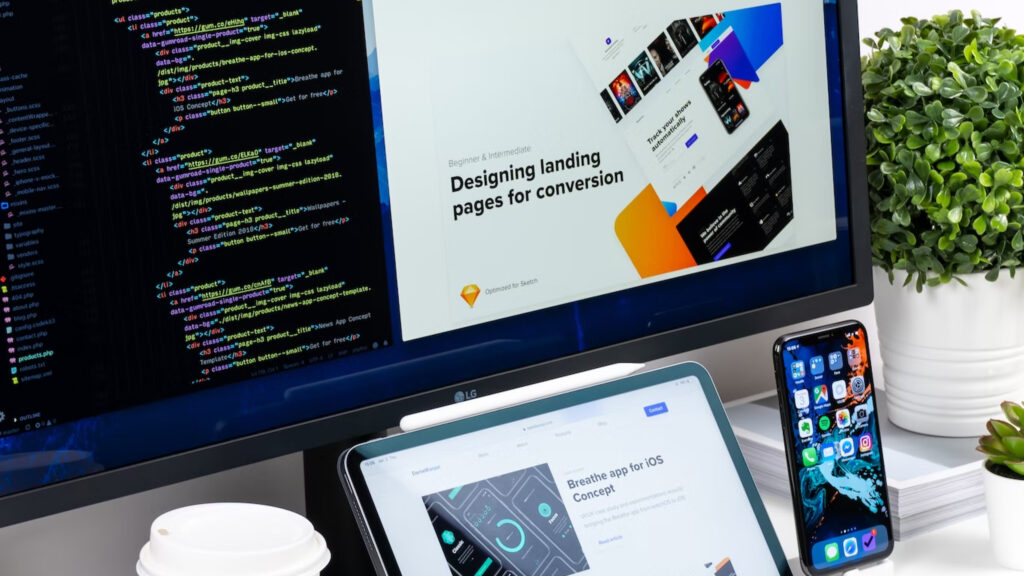
9 Use Cases For Flutter: What Kinds Of Projects Is It Ideal For?
Flutter, a popular mobile app development framework, has rapidly increased usage, with over 500,000 apps built and released using it. This is due to its ability to create visually stunning projects beyond mobile apps. With the recent addition of web, Windows, macOS, and Linux support, businesses can take advantage of Flutter’s feature parity, composability, and near-native performance to create a wide range of products. Google’s SDK for Flutter provides a comprehensive environment with a framework, widgets, and tools that are easy to use, allowing businesses to save on development costs and roll out products quickly. Here are some recommended use cases for entrepreneurs to capitalize on these advantages.
Flutter For Mobile And Desktop Applications

Flutter is known for its cross-platform capabilities, but Google has made it a priority for the framework to excel in building fast apps for any platform. Businesses worldwide are capitalizing on this rapidly-improving app development framework in various ways.
1. Decentralized Exchanges
Speed is a crucial advantage of Flutter, making it an excellent fit for use cases that require real-time updates. Decentralized exchanges are a perfect example. A good utility crypto token should allow multiple transactions to be accomplished at an astonishingly quick rate, and this information should be instantly shared across the entire blockchain. With Flutter’s seamless integration with CoinMarketCap’s APIs and Google’s Material Design Principles, you can build a decentralized exchange like Cryptograph. They focused on speed and an intuitive design interface; Cryptograph provides its users with up-to-date, on-time, and precise data on over 1,600 cryptocurrencies.
2. Payment Methods
Google has proven the success of its SDK development with Google Pay, which allows over 100 million users worldwide to pay, save, manage expenses, and more. The app is one of the fastest-growing e-wallets on the market. Initially, the Google team used 1.7 million lines of code between the Android and iOS versions of the app, which proved unsustainable as they had to rewrite much of it to include new features and expand to new countries. This led to the eventual migration to Flutter. Rebuilding Google Pay on Flutter required the company to retrain its developers on a new language, platform, and approach to the user interface. However, the revamped app was smaller, faster, and cost less to maintain, and it also allowed them to reduce their engineering efforts by 70% and the total lines of code by 35%.
3. Journaling Applications
Journaling applications require beautiful, intuitive databases that are easy for the user to understand and simple for the developers to add features. Flutter’s widgets are easy to deploy and customize, as demonstrated by Reflectly and PUSH Pro.
Reflectly And PUSH Pro
Reflectly, a mental health companion, was created in just two months by a team of only two developers using Flutter’s widgets. PUSH Pro, a journalistic approach to fitness and app development, is another example of how Flutter can be used to create an intuitive and user-friendly journaling application.
4. Smart Home Interconnectivity
Interconnectivity applications allow users to customize every internet-connected item in their home. The Philips Hue app, for example, allows a comprehensive organization, control, and customization for all accessories in the Philips ecosystem.
Building Interconnectivity Applications With Flutter
Now think about an app like this but without the ecosystem restriction. Think about how useful that would be for everyone and anyone. Think about how easily this could be accomplished through Flutter, a development kit that can quickly speak across platforms and to different devices.
5. Music Platform Development
Flutter offers various packages that can be used for multiple functions. Building a music platform with Flutter would require using the flutter_audio_query and audio_manager packages. These will fetch the music from external storage spaces and provide play, pause, seek, and volume functionalities for music players. This is just a taste of the valuable packages you could get with Flutter.
6. Booking Apps
When it comes to booking apps, design is of utmost importance. Aside from an easy and uncomplicated booking process, a booking app project should also feature a beautiful design. The use of attention-grabbing photos will naturally trigger guests to experience the vacation. Eventually, this encourages the viewer to make the reservation.
Flexibility And Customization
One of Flutter’s tenets is flexibility. This principle focuses on pixel control and customization. Flutter allows you to build adaptive designs that look great regardless of screen size. Whether scrollable banners or animated lists, you’ll have the perfect widget to execute your vision of a captivating booking and travel application.
Integration With Other Systems
On top of that, you need to build your project on a toolkit that will allow you to integrate your project with other hotel property management systems and channel managers. Combining all this into the backend of your project could be done with Rest API, as it provides simple HTTP calls to perform web requests and communicates with JSON data.
7. Games Development
When building a game, it’s essential to ensure that it’s reliable and its users can continuously access the game 24/7 nonstop. This was the problem that Lotum’s flagship game, 4 Pics 1 Word, faced before they migrated to Flutter. Lotum’s reports highlight that they spent half their development time working on troubleshooting cross-platform functionality. As Flutter was neither a native app nor required a separate development team for every platform, it became the obvious solution for Lotum to roll out updates without fear of overriding pre-existing components continuously. Potential businesses should also check out the Flame Engine, a modular game engine that provides a complete infrastructure to code playable games. Built by the Blue Fire Team, critical features of this package include game loops, effects and particles, collision detection, and gesture and input handling.
8. Banking And Mobile Wallets
Banking applications need feature parity, a streamlined UI, and end-to-end feature development to provide a safe, accessible, and simple banking experience to everyday people. Flutter offers all that as it removes the need for specialized teams and answers the call for API stability and testing capabilities. In digital banking and mobile wallets, speed is critical to success.
Speed And Efficiency
One must launch a fully-functioning feature that won’t fail their users. A successful digital bank will launch this feature before its competitors. And Flutter rises to the occasion. Just ask Nubank, the largest independent digital bank outside of Asia, which was able to develop and release its new life insurance features in just three months, cutting down its initial timeline expectations by over 50%.
Competitive Edge
Just imagine how quickly you could expand your user base as a digital bank if you beat your competitors to the punch every single time.
9. Social Networking Applications
Though no one’s actively attempted to create a social networking app with Flutter, it’s possible to build an entire social networking platform. With the proper marketing and added features, these social networking applications could rival even the media created by Meta and Twitter.
Cross-Platform Development
You could quickly build cross-platform applications through shared Dart codebases. Because of the rapid development and deployment timelines, imagine how much of the budget one could cut down without the need to build multiple teams to develop the exact version of the same application for a different platform.
Rapid Development And Deployment
The sped-up deployment also means that developers could build social media platforms and launch prototypes or viable projects faster. This will allow the organization to showcase its app to the world, quickly iterate, and update it based on customer feedback. With over 3.78 billion social media users worldwide, imagine the vast reach and the sheer money the right social media platform could generate. And it all starts with Flutter.
Flutter's Web Applications

Expanding Cross-Platform Technology
When Flutter was first launched in December of 2021, Google announced that while Flutter 1.0 may deliver fast execution for the Android and iOS networks, its web development features were lacking. In the release of Flutter’s next generation, Flutter 2, the SDK broadened its cross-platform technology to include the World Wide Web. This allowed Flutter’s initially app-centric framework to take full advantage of modern browsers’ features.
Use Cases For Flutter's Web Applications
With Flutter 2, you can use the same codebase to ship native mobile applications to almost any operating system and web browser. Google took it a step further by allowing application embedding for cars, TVs, and smart home appliances. Here are some of the internet’s existing use cases for Flutter’s Web Applications:
Project management platforms: Use a project management system to build a project system management. Supernova, for example, uses Flutter to develop a collaborative web application for designers and developers to import Figma designs and export the code in Flutter.
E-commerce platforms: eBay motors and Alibaba have migrated to Flutter – and they’ve blown their competition out of the water through shared code and 2x faster development.
Spreadsheets: A key feature of spreadsheets is customizability. Through thoughtful planning and consideration, the user begins with a blank sheet and starts carving out a story of data and facts.
Editors: An online editor should be accessible, team-friendly, and able to export in various formats. Rive, for example, has used Flutter to add custom pieces to the program that are feature-building and capable of tinkering and building prototypes of features.
Why Use Flutter For App Development

Key Benefits of Using Flutter
Feature parity: Flutter allows cross-platform development with a single codebase, resulting in feature parity across different operating systems and web browsers.
Reduced development time: Sharing the same codebase and utilizing ready-made and customizable widgets in Flutter simplifies development and reduces the time needed to build and release a minimum viable product.
High performance: Flutter’s native platform channels for communication between the app and platform result in faster apps with fewer performance issues.
Manish Surapaneni
A Visionary & Expert in enhancing customer experience design, build solutions, modernize applications and leverage technology with Data Analytics to create real value.
Other articles

Manish Surapaneni
Stop Outsourcing Your Ethics, Tech Leaders
Setting up their own ethics committee is a step forward for tech companies, as they are the clear winners of

Manish Surapaneni
How To Beat The Tech Talent Squeeze In 2023: 6 Proven Strategies
In the current economic climate, with rising costs and increased job turnover, one of the biggest mistakes a company can

Manish Surapaneni
How Augmented Human Intelligence Can Enhance Our Lives With Machines
The advancement of technology has simplified our lives. It has also significantly increased our reliance on electronic devices. MIT Media